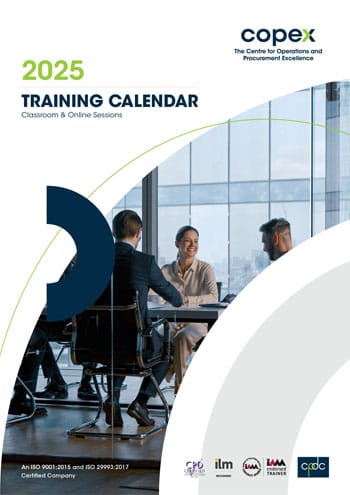
A Highly Interactive Training Course On
Forensic Accounting and Fraud Control
Uncovering Fraud - The Almost Invisible Enemy
Course Introduction
This Forensic Accounting and Fraud Control training course is tailored for individuals seeking to understand one of the most critical and rapidly growing issues in business: fraud. With global economic losses exceeding $4 trillion last year due to fraud, as reported by the Association of Certified Fraud Examiners, it is a major, yet often underestimated risk.
Through case studies and the extensive experience of the trainer, this course will focus on developing effective processes for fraud detection. The Forensic Accounting and Fraud Control training course will cover essential tools and techniques for uncovering fraud, including the application of big data and data analytics.
This training course will feature:
- How to identify the profiles of the different fraudsters
- The anatomy of fraud and how to detect it
- The 50 main fraud indicators
- The power of data analytics
- How to use powerful but relatively unknown tools such as Benford’s law and Markov chains
Training Objectives
By the end of this training course, participants will be able to:
- Think like a fraudster – the only way to detect complex frauds
- Understand the techniques of data mining as a fraud detection tool
- Appreciate the key aspects of fraud profiling
- Use continuous auditing and continuous monitoring to uncover unusual patterns
- Understand when it seems ‘too good to be true’ it usually will be
Training Methodology
This dynamic COPEX training course will utilise a variety of proven learning techniques to ensure maximum understanding, comprehension and retention of the information presented. This includes various exercises and case studies to provide practical application of the tools and techniques. A series of valuable tools and templates will be provided in electronic format – to take away and use immediately.
Who should Attend?
Professionals who need to build a more in depth understanding of fraud detection techniques
This COPEX training course is suitable to a wide range of professionals but will greatly benefit:
- Internal auditors in organisations without a dedicated fraud team, as they are having to take a much more significant role in the detection and investigation of fraud
- Audit Managers and Lead Auditors who need to learn about the most modern approaches to fraud detection
- Fraud specialists who need more appreciation of how to detect fraud
- Certified Fraud Examiners
- Accountants who need an understanding of forensics
- Managers needing a broader understanding of how to prevent and detect fraud
Course Outline
- The power of Fraud Profiling
- Who are the fraudsters – internal and external
- ACFE fraud survey results
- Identity fraud
- Corruption – the most difficult fraud to detect
- 15 case studies and the key lessons
- Why controls may not protect you
- Putting yourself in the mind of the fraudster
- The 50 key indicators – and how to use them
- Developing a forensic audit toolkit
- The need for a cost-effective balance between prevention and detection
- Identifying vulnerabilities
- Use of Computer assisted audit techniques (CAAT’s)
- Data mining techniques
- Fraud risk prioritisation
- Benford’s law
- Use on Monte Carlo simulations and Markov chains
- Forensic auditing of big data
- Automated fraud detection
- The control weakness and the key fields approaches
- The association rules in fraud detection
- Use of fuzzy logic
- Neural networks
- Data visualisation and pattern recognition
- What to do when potential fraud is detected
- The legal aspects of use of forensic data
- Using external and internal databases
- Integrating the information/ identifiers in audits – to avoid bringing attention
- Reporting the results
- When to inform external bodies
Providers and Associations


Certificates
- COPEX Certificate of Attendance will be provided to delegates who attend and complete the course
Material published by Copex shown here is copyrighted. All rights reserved. Any unauthorized copying, distribution, use, dissemination, downloading, storing (in any medium), transmission, reproduction or reliance in whole or any part of this course outline is prohibited and will constitute an infringement of copyright.
COPEX Training is your gateway to professional growth, with over 20 years of experience turning potential into success. Each year, we deliver over 1,000 courses in 50+ countries, earning a stellar 98% satisfaction rate. Trusted by global giants like BP, the United Nations, and HSBC, we partner with top certification bodies to provide career-focused training that empowers individuals and drives organizational breakthroughs. Our mission? To transform the way professionals learn and grow in today’s fast-changing industries. Through expert insights, cutting-edge methods, and hands-on approaches, we equip you with the skills and confidence to tackle challenges, seize opportunities, and thrive in your career.
Led by a passionate leadership team and supported by a network of world-class trainers, COPEX Training connects professionals worldwide with life-changing opportunities. We are committed to excellence, ensuring every participant leaves with the tools, expertise, and confidence to conquer an ever-evolving world.
Frequently Asked Questions
This FAQ section provides quick answers to the most common questions about our services, procedures, and policies. We aim to make your experience with us as straightforward as possible. For further assistance, our support team is ready to help.
Enhanced Skills: Develop in-demand skills and knowledge in your chosen field.
Career Advancement: Improve your career prospects and increase your earning potential.
Increased Confidence: Gain confidence in your abilities and enhance your professional presence.
Networking Opportunities: Connect with other professionals and industry experts.
Improved Job Performance: Enhance your productivity, efficiency, and job satisfaction.
Personal Growth: Develop valuable personal and professional skills that can benefit you in all areas of life.
Experienced Instructors: Courses are delivered by highly qualified and experienced instructors with industry expertise.
Interactive Learning: Engaging and interactive learning methods, including workshops, simulations, case studies, and group discussions.
Practical Application: Focus on practical skills and real-world applications, enabling you to apply your learning immediately.
Flexible Learning Options: A variety of course formats available, including classroom training, online courses, and blended learning.
Certification & Recognition: Upon successful completion, you may receive industry-recognized certifications.
There are several ways to register in our public training courses:
Online – Browse the Training Plan, select the course of choice, click on the button
“Register Now” inside the course outline page.
E-mail – Send the details (name, company name, email address and training course of
choice) of your nomination to [email protected]
Telephone – +971 4 368 6886 or +971 50 106 2750
Upon successful registration, processing window will take not more than 24 hours from the time of registration. An email including the registration confirmation, invoice and joining instructions will be sent to the provided email address.
Published training course fees are inclusive of the training venue, training manual, writing materials, lunch and coffee breaks with refreshments over the entire duration of the training course.
The training course fee can be settled by either:
- Bank transfer
- Credit Card
Our training courses will run for 5 hours per day. The standard daily timing is from 8:30 am – 3:30 pm including the coffee/tea breaks and lunch.
Our training courses courses are being held at five-star hotels in prime and iconic destinations across the globe. Cities such as Amsterdam, Barcelona, Dubai, Geneva, Istanbul, Kuala Lumpur, London, Houston, New York, Paris, Vienna, Zurich, etc.
Once officially registered, we can assist by providing the corporate rates provided by the hotel where the training course will be conducted. Early confirmation will enable us to secure the room at reduced rates
Our cancellation policy varies depending on the circumstances presented. Generally, cancellations must be initiated in formal writing at least 14 days prior to the commencement date of the training course. Further, the option to shift an existing registration to another training course on a later date is possible. Otherwise, a full refund will be initiated.
Delegates who will attend and successfully complete the training course will earn a COPEX Certificate of Completion. This certification is designed to validate the successful knowledge transfer, and that the desired learning objectives and outcomes to further advance your professional competency are achieved.

We can customize this
training course for you!
Other Specialized Training Courses
Explore a selection of specialized training courses designed to advance your skills and knowledge in key areas critical to professional success. COPEX provides a wide range of programs tailored to meet industry demands, empowering you to stay competitive in today’s dynamic landscape.

